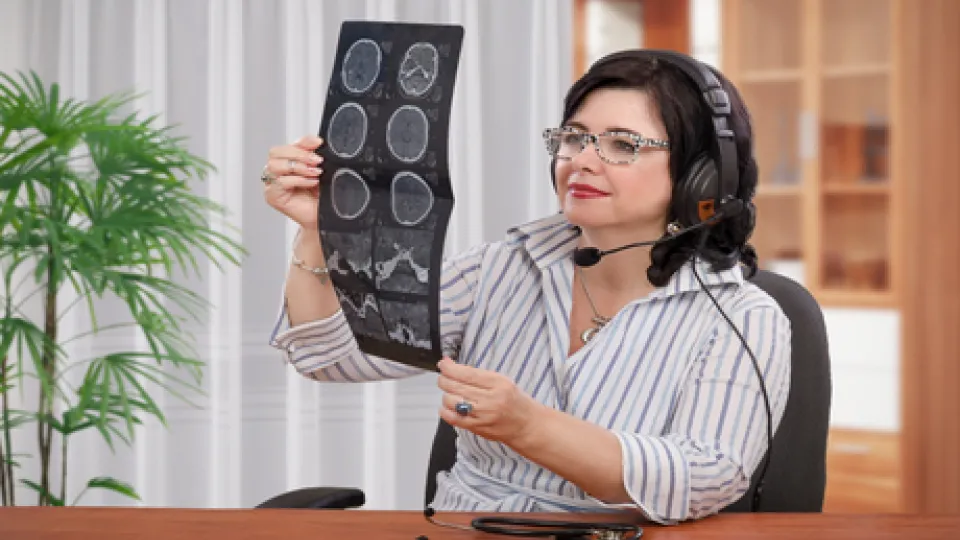Concorde Staff

Apps, delivery services and Telehealth - medical services via telecommunications technology - are rapidly changing the healthcare industry. According to a First Stop Health article, 29 stats you need to know about telemedicine, the total addressable market for non-emergency telemedicine visits in the U.S. is estimated at 400+ million or approximately one-third of the 1.25 billion annual U.S. ambulatory care visits. A survey by the National Business Group on Health found that 90% of large employers expected to offer a telemedicine benefit in 2017 (where it is allowed); a sharp jump from 70% in 2016. It's a trend that shows no signs of slowing down.
As an expansion of the narrower field of telemedicine, telehealth focuses on preventive care in addition to remediating acute medical conditions. Today's telehealth includes remote, often home-based monitoring through email, phone, the Internet, mobile apps and dedicated computer terminals using telecommunication-ready devices such as blood pressure cuffs. It also includes services provided through hospitals and other medical facilities, often entailing remote treatment or consultation by specialists.
The quickly evolving field of telehealth holds both benefits and disadvantages for patients and medical providers alike.
Benefits of Telehealth
For patients, telehealth can be a blessing that allows them to remain in their homes rather than moving to rehabilitation facilities. By taking an active role in their own care, some patients are reducing the number of medications they take, visiting emergency rooms less frequently and even lessening depressive symptoms, the National Care Planning Council reports.
In hospitals and other healthcare facilities, telehealth is opening up new treatment options. A practice referred to as "nighthawking" is making use of licensed U.S. physicians who live elsewhere in the world and can provide services such as radiology screening assessments during the overnight hours. And telehealth is saving money, especially for small hospitals that can use remote specialists such as telepharmacists who are shared by multiple hospitals.
Telehealth also is boosting productivity and efficiency for medical providers, who can quickly move from one appointment to the next, notes HealthLeadersMedia.
Disadvantages of Telehealth
Despite the many advantages, a number of barriers exist that present challenges in the widespread adoption of telehealth. Using telehealth efficiently typically requires both homes and hospitals to have reliable, fast broadband connections. In addition, since physicians must be licensed in a variety of locations with licensure granted by individual states, the situation can become complex.
Telehealth also can present challenges relating to privacy and disclosures. It's not yet clear whether telehealth apps qualify as medical devices under Food and Drug Administration regulations, and many apps disregard privacy rules stipulated in the Health Insurance Portability and Accountability Act, or HIPAA, reports Lexology. Experts also note that improvements are needed for handling "informed consent," which makes patients aware of the advantages and potential concerns associated with medical treatments.
Online Health Care, the Rise of App Technology
Advances in technology, such as video chat and live-streaming apps are making it easier for people to keep in touch, no matter where they are. But what happens when we apply these technological advances to the very personal act of medical care?
The rise of app technology has led to the development of new cybermedicine apps that allow patients to interact with doctors online. These apps operate much like urgent care centers and walk-in clinics by making it possible for patients to receive medical care outside of regular office hours or without having to set up appointments beforehand. All patients have to do is open one of these apps and connect with an available, real-life doctor in order to have medical issues diagnosed and treated.
With the near-ubiquitous use of smartphones - or cameras on phones, at a minimum - doctors are able to check for a wide range of symptoms. For example, patients might be asked to hold their smartphone or tablet up to their eye or near their throat, so doctors can look for signs of an infection or illness.
One app, HealthTap, says it has 72,000 doctors on call available to subscribers 24/7, 365 days a year. You can share photos, test results and speak live with a doctor all via your smartphone, web browser or telephone from anywhere in the world. There are different levels of plans available - it comes at a cost, of course - and doctors are able to write prescriptions and make referrals, depending on the level of care you choose.
Some expect patient demand for virtual health care to increase in the coming years due to several factors, including the expansion of insurance coverage through the Affordable Care Act, an aging population, the increase of chronic diseases and the primary physician shortage, according to advocates of this technology at CVS Health.
Benefits of Virtual doctor visits
Virtual doctor visits offer advantages for both doctors and patients. Some of the pros include:
- Early treatment- The convenience of these visits increases the chance of patients seeking treatment early instead of waiting for their condition to get worse, which can help save on health care costs.
- Convenience- Patients can visit with a doctor online at convenient times from almost any location rather than having to schedule appointments during work hours.
Conversely, the main concern with virtual visits seems to be that some patients might overuse them and seek treatment for any minor medical issue they experience, which could end up costing insurance companies more money. For now, the benefits of these visits outweigh the potential risks.
Uber for Doctor House Calls
In this "smart" age, it often seems as though there is an app for everything. Locate a destination? Check. Order your Starbucks? Check. Scratch an itch on your nose? Well, not quite yet, but you know it's coming. The health care industry isn't immune to the app age. Far from it. It seems health care awareness is on the uptick everywhere as our Concorde students and graduates know too well.
And now, there are new smartphone apps that can deliver a doctor to your doorstep.
A New York Times article detailed the new app, Heal, a smartphone app similar to the on-demand car service, Uber. Users download the app onto their smartphones and then type in a few details such as address and the reason for the visit. After adding a credit card and a request for a family doctor or pediatrician, the physician arrives in 20-60 minutes for a flat fee of $99.
What is Heal
Heal began in Los Angeles about one and a half years ago, expanded to San Francisco and now is available in Orange County, Silicon Valley, San Diego, and Washington D.C. Heal doctors are on call from 8 a.m.-8 p.m., seven days a week.
Heal doctors arrive with a Medical Assistant and are stocked with many of the latest technological gadgets, including tools to take your vitals or shoot high-definition imagery of an interior organ.
"We're bringing back old-school techniques with new-school technology," Dr. Renee Dua, a founder, and chief medical officer of Heal, said in The New York Times piece.
Heal doctors offer limited services but can diagnose and treat ailments like bronchitis, give flu shots, stitch up a nasty cut or write a prescription. They'll even pick up that prescription for an extra $19.
Services similar to Heal
A similar service to Heal, Pager, was started in New York City by, notably, Oscar Salazar, who was part of the team that created Uber. A first-time Pager home visit costs $50, regular visits are $200 and a physical is $100.
Go2Nurse brings a nurse to homes in Chicago and Milwaukee and includes at-home pregnancy care, help with newborns, eldercare and specialized care for Alzheimer's and Parkinson's patients, among other services.
Curbside Care offers house calls in the Philadelphia area from nurse practitioners and physicians.
One of the most popular apps is San Francisco-based Doctor on Demand, backed by Google and TV personality Phil McGraw. The app, which offers access to 1,400 board-certified physicians, has been downloaded a few million times since introduced in late 2013. For $40, a physician or pediatrician will consult with you via video.
"There's a huge access problem to primary care in the U.S.," Adam Jackson, a founder and chief executive of Doctor on Demand, said in The Times article. "The average wait time to see a doctor is 20 days. People really want and need something faster, and now we have the technology on both sides to get it."
Is Face-to-Face health care in trouble?
So far, traditional medical providers appear to face few threats from the rise of telehealth. In fact, some experts say telehealth may prove to be a boon to rural healthcare providers, long-suffering from mushrooming costs and low patient volume.
Rural hospitals often simply stabilize patients until they can be transferred to larger hospitals. However, with the advent of telehealth, some small hospitals are finding that they can keep patients in their facilities longer - and thus, increase revenues - by making use of remote specialists.
It's uncertain how telehealth and other technologies may evolve in the future. For now, advantages like keeping patients in their own homes and out of rehab centers, lowering costs and providing a boost to rural hospitals appear to outweigh the negatives. As the nation's medical and health-related programs train more students in delivering services via telecommunications, the popularity of telehealth will continue to grow.

Take The Next Step Towards a Brighter Future
We have a Concorde representative ready to talk about what matters most to you. Get answers about start dates, curriculum, financial aid, scholarships and more!



